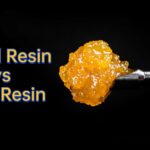As the popularity of hemp-derived cannabinoids continues to soar, new compounds are constantly emerging on the market. One such cannabinoid that has recently caught the attention of enthusiasts is THC-M. Despite its mysterious nature, THC-M is a fascinating compound that offers a unique twist on the traditional cannabis experience. In this comprehensive guide, we’ll explore what is THC M , its potential effects, legality, and where you can find products containing this intriguing cannabinoid.

Contents
What is THC M: A Naturally Occurring Cannabinoid
THC-M, also known as tetrahydrocannabinolic acid-M, was first discovered in 1997 as a compound found in cannabis smoke. It was initially used as a biomarker to identify potential in-utero exposure to cannabis, up to five months before birth. However, it wasn’t until recently that THC-M gained recognition in the cannabinoid community.
While THC-M is believed to be a naturally occurring, trace cannabinoid, it has never been isolated directly from the cannabis plant. Instead, hemp brands have employed isomerization techniques to convert CBD into THC-M through the rearrangement of molecules. This process allows for the creation of THC-M products, enabling consumers to experience the unique effects of this compound.
Is THC-M Intoxicating
The burning question on many cannabis enthusiasts’ minds is whether or not THC-M can get you high. Unfortunately, the answer is not entirely clear due to the lack of research surrounding this compound. Based on the limited information available about its chemical structure, THC-M does not appear to have psychoactive capabilities.
However, it’s important to note that THC-M is often found in vape products that also contain other psychoactive cannabinoids like THC-P, delta-8 THC, HHC, and more. In these blends, THC-M is believed to act as a cannabinoid potentiator, enhancing the effects of the other intoxicating compounds.
Theoretically, combining THC-M with a psychoactive cannabinoid like THC-P could result in a more potent and longer-lasting high. This is due to THC-M’s ability to potentially strengthen the binding of these compounds to the body’s cannabinoid receptors, allowing for a more profound and extended experience.
It’s important to remember that THC-M is a relatively new cannabinoid, and our understanding of its effects is still limited. As more research is conducted, we may gain a better understanding of whether THC-M offers any intoxicating properties on its own or if it solely serves as a potentiator for other cannabinoids.
Potential Benefits of THC-M
While the specific benefits of THC-M are still largely unknown, we can speculate based on its potentiating nature. If THC-M does indeed enhance the effects of other cannabinoids, it could potentially amplify their therapeutic benefits as well.
For example, if you’re using a cannabinoid known for its pain-relieving or anti-anxiety properties, combining it with THC-M could theoretically boost those effects. However, it’s crucial to note that these potential benefits are purely hypothetical until more research is conducted.
Legality of THC-M
When it comes to the legality of THC-M, the situation is relatively straightforward on a federal level. According to the 2018 Farm Bill, all hemp products containing a maximum of 0.3% delta-9 THC are legal. Since THC-M is not delta-9 THC, it is compliant with federal regulations and can be sold without limitations on its concentration.
However, it’s important to note that some states have taken a more restrictive approach to cannabinoids. As of now, 20 states have banned THC-M, including:
- Alaska
- Arizona
- Arkansas
- California
- Colorado
- Delaware
- Hawaii
- Idaho
- Iowa
- Maryland
- Mississippi
- Montana
- Nevada
- New York
- North Dakota
- Oregon
- Rhode Island
- Utah
- Vermont
- Washington
If you reside in one of these states, unfortunately, you will not be able to purchase THC-M products legally. It’s always advisable to check your local laws and regulations before purchasing or consuming any cannabinoid product.
Where to Find THC-M Products
Currently, the most common form of THC-M products on the market is vapes featuring cannabinoid blends. As mentioned earlier, these vapes often combine THC-M with other intoxicating cannabinoids like THC-P, delta-8 THC, or HHC, with the goal of providing a more potent and longer-lasting high.
Aside from vapes, you may also come across the occasional gummy or other edible product containing a cannabinoid blend that includes THC-M. However, these options are less common than vape products at the moment.
When shopping for THC-M products, it’s crucial to prioritize trusted brands with a solid reputation and a commitment to transparency. Look for companies that provide detailed lab reports and have a strong track record of producing high-quality, safe products.
One brand that is currently working on THC-M products through their popular cannabinoid blends line is Binoid. Known for their highly effective and top-quality products, Binoid is a trusted name in the hemp market, making them a reliable option for those looking to explore THC-M.
Is THC-M Right for You
Ultimately, whether or not THC-M is right for you will depend on your personal preferences and goals. If you’re primarily interested in the potential therapeutic benefits of cannabinoids, incorporating THC-M into your routine could theoretically enhance those effects. However, if you’re seeking a purely recreational experience, THC-M may not be the ideal choice on its own, as it is unlikely to produce a significant high when consumed alone.
It’s important to approach THC-M with an open mind and a willingness to experiment. As with any new cannabinoid, it’s recommended to start with a low dose and gradually increase as needed, while paying close attention to your body’s response.
Final Thoughts
THC-M is a fascinating and largely unexplored cannabinoid that offers a unique twist on the traditional cannabis experience. While our understanding of its effects is still limited, the potential for THC-M to act as a cannabinoid potentiator is intriguing and warrants further research.
As the hemp market continues to evolve and new products emerge, it’s essential to stay informed and prioritize trusted brands that prioritize transparency and quality. By approaching THC-M with an open mind and a willingness to experiment, you may discover a new dimension to your cannabinoid journey.
Remember, if you’re considering trying THC-M, be sure to check your local laws and regulations, and always start with a low dose to assess your individual response. With the proper methods and guidance from NoNicVape, THC-M can be a valuable addition to your cannabinoid arsenal.
FAQS
What are the benefits of THC-M?
The potential benefits of THC-M are not well-established due to the lack of research on this cannabinoid. However, based on its proposed role as a cannabinoid potentiator, it is speculated that THC-M could enhance the therapeutic effects of other cannabinoids when combined with them.
For instance, if THC-M is taken alongside a cannabinoid known for its pain-relieving or anti-anxiety properties, it could theoretically amplify those benefits. However, these claims are purely hypothetical until more studies are conducted on THC-M.
What is the difference between THC-P and THC-M?
THC-P and THC-M are two distinct cannabinoids with different properties:
– THC-P (Tetrahydrocannabiphorol) is a synthetic cannabinoid that is said to be up to 33 times more potent than regular THC in binding to cannabinoid receptors. It is known for its potent psychoactive effects and is often used recreationally.
– THC-M (Tetrahydrocannabinolic acid-M) is a naturally degraded form of THC that results from aging plant material. It is believed to act as a cannabinoid potentiator, potentially enhancing the effects of other cannabinoids when combined with them. However, it is unlikely to produce significant psychoactive effects on its own.
The key difference lies in their potency and effects. THC-P is a highly potent synthetic cannabinoid known for its intoxicating properties, while THC-M is a naturally occurring compound that may enhance the effects of other cannabinoids without being significantly psychoactive on its own.
What does THCM stand for?
THCM stands for Tetrahydrocannabinolic acid-M. It is the full name for the cannabinoid commonly referred to as THC-M.
The breakdown of the acronym is as follows:
– THC: Tetrahydrocannabinol, which is the primary psychoactive compound found in cannabis.
– M: This refers to the specific alkyl side chain length of the molecule, which is believed to be responsible for its unique properties.
So, THCM is a variant of THC where the alkyl side chain has a specific length, differentiated from other cannabinoids like THC-P or THC-O, which have different side chain lengths.
While THCM shares some similarities with THC, such as being a degraded form of the compound, it is a distinct cannabinoid with its own potential effects and properties, particularly as a potential cannabinoid potentiator.
Is THCA stronger than regular THC?
THCA (Tetrahydrocannabinolic acid) is the precursor to THC and is not psychoactive in its raw, unheated state. When THCA is heated, through a process called decarboxylation, it loses a carboxyl group and becomes the psychoactive compound THC.
In its raw form, THCA is not stronger than regular THC in terms of psychoactive effects. However, THCA is believed to have its own therapeutic benefits, such as anti-inflammatory, neuroprotective, and anti-proliferative properties.
When comparing the potential medical benefits, THCA and THC may offer different advantages depending on the desired effects. For example, THCA may be preferred for its anti-inflammatory properties, while THC may be more suitable for its analgesic (pain-relieving) and appetite-stimulating effects.
It’s important to note that the effects of THCA and THC can vary depending on factors such as dosage, method of consumption, and individual physiology. More research is needed to fully understand the differences and potential benefits of these two compounds.






